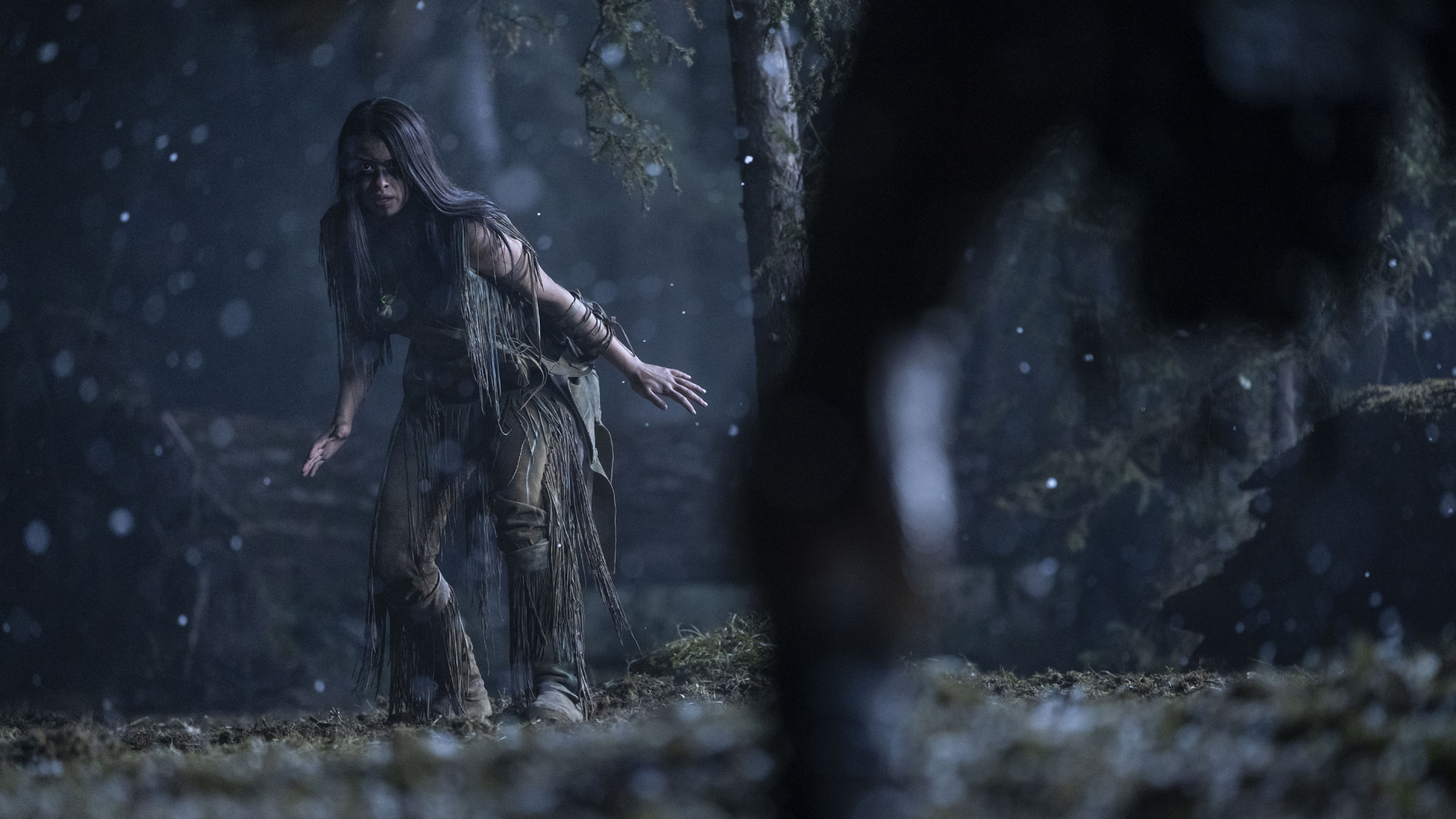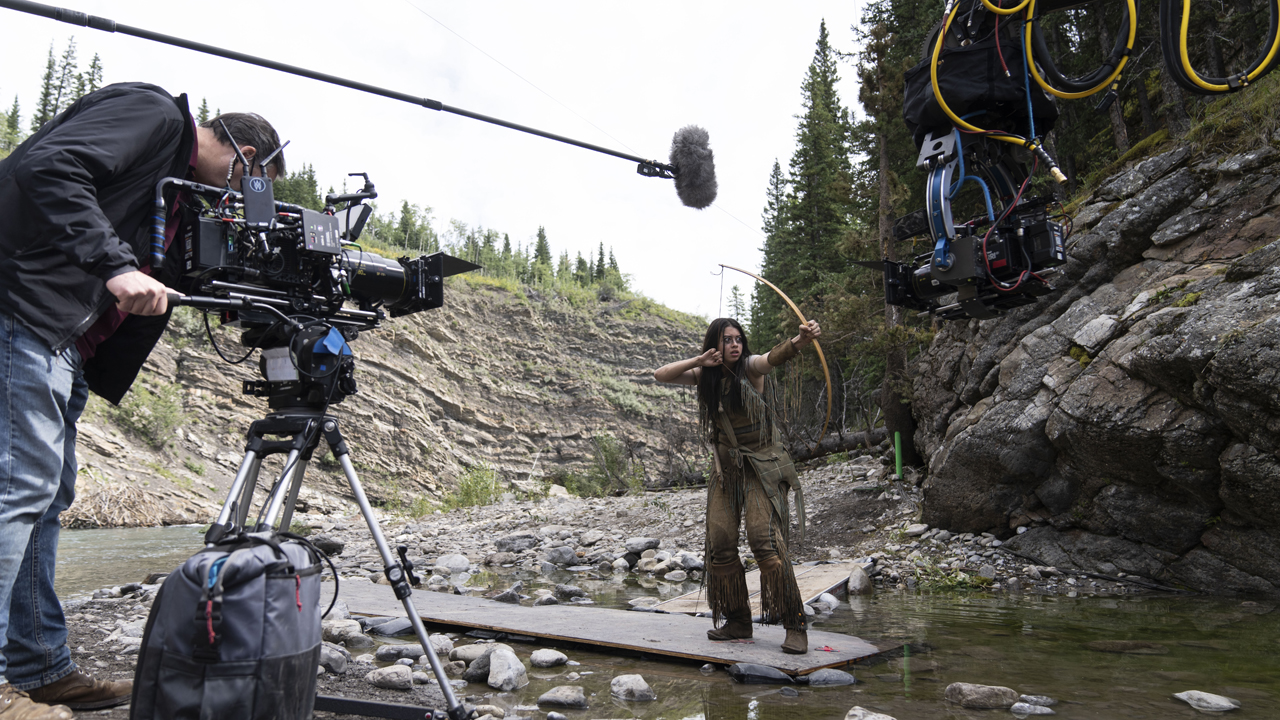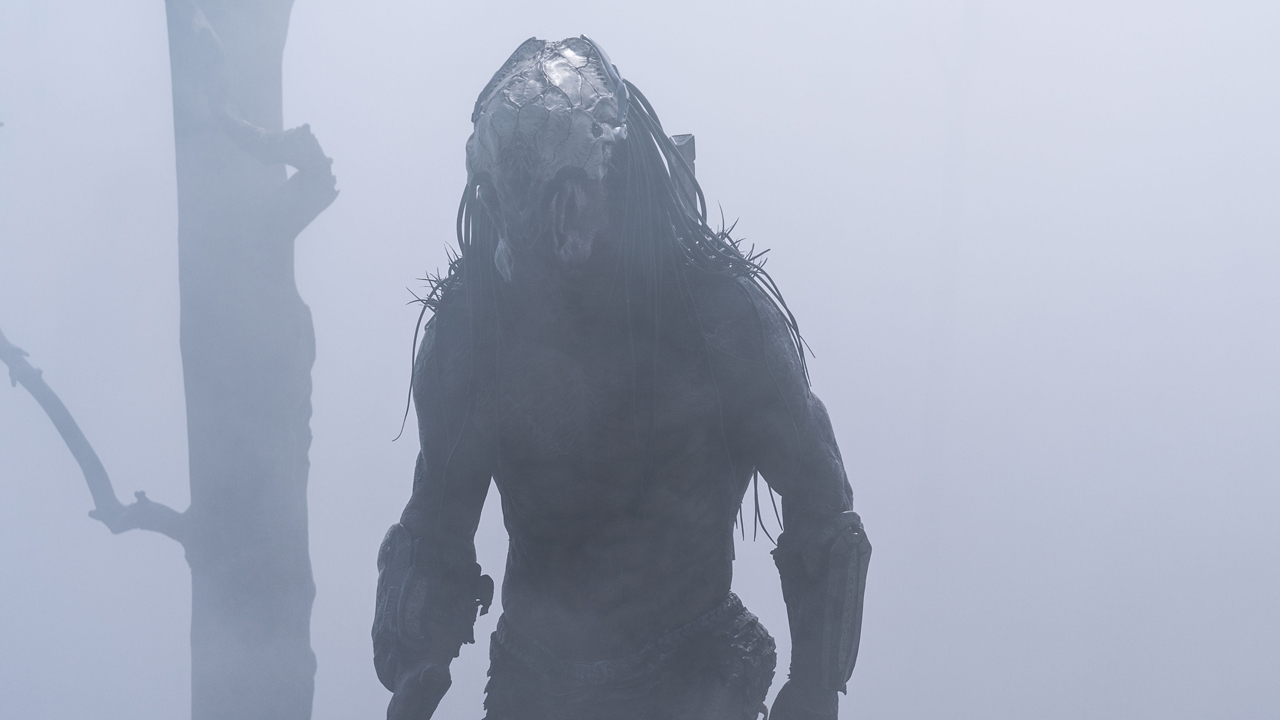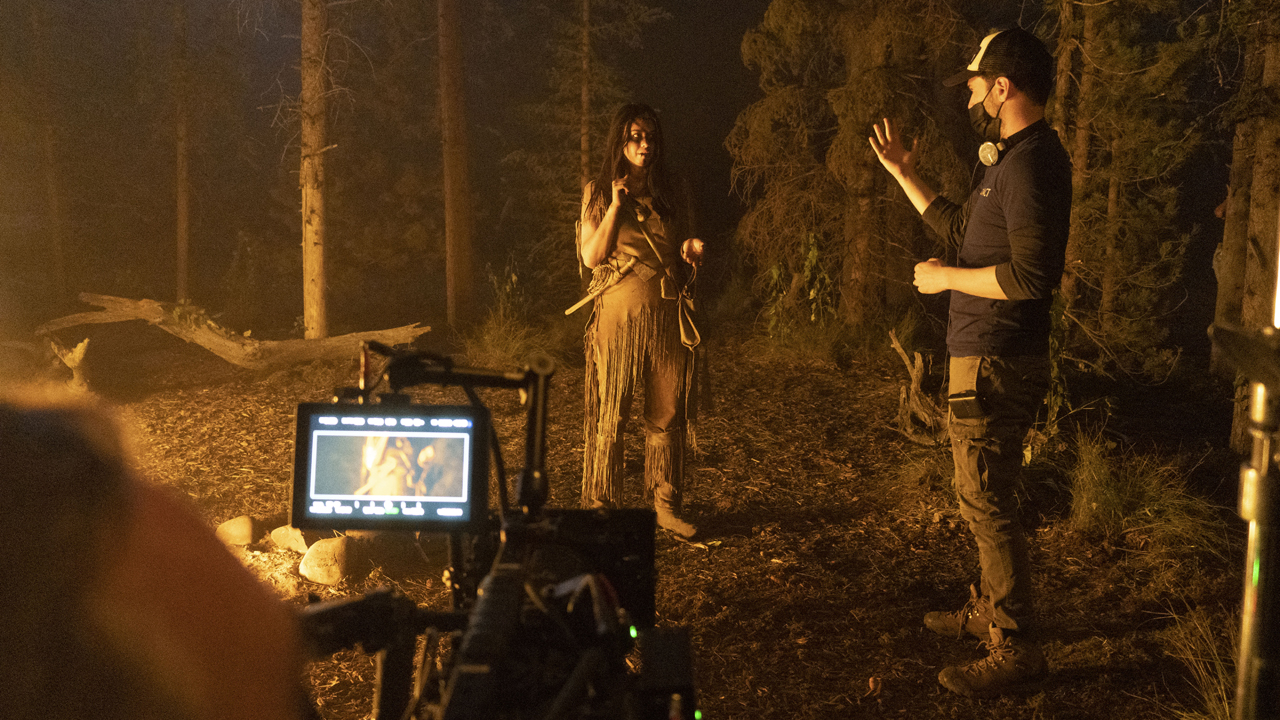Inside Prey, the radical Predator movie that 'shifts the Hollywood paradigm'

Dan Trachtenberg is fully aware of the massive responsibility resting on his shoulders. Since 2018, the 10 Cloverfield Lane and Black Mirror director has spent every waking hour building and refining a new entry in a movie series that's very close to his heart: the Predator franchise.
The pressure he feels is understandable. The series' first entry, the 1987 Arnold Schwarzenegger-starring Predator flick, is revered as one of the best sci-fi movies ever made. However, the same can't be said of its three sequels, which were mauled by fans and critics upon release. Meanwhile, the less said about the abject Alien vs Predator crossover films, the better.
As a diehard Predator fan, Trachtenberg is conscious of the series' diminishing returns. Other 80s sci-fi franchises, such as Alien and Terminator, haven't fared much better in the 40-plus years since their creation. But, in Aliens and Terminator 2, both series birthed sequels that are arguably superior to their first films – something the Predator franchise can't similarly claim.
Now, the Predator series finally has the chance to put that long-running irritation to bed. The result of Trachtenberg's four-year journey is Prey, a prequel film – although he doesn't personally refer to it as such – that simultaneously looks to revive the series and deliver a Predator movie that fans can be proud of.
"I'm a massive fan, so I had my own inner geek to please and not p**s off," Trachtenberg tells TechRadar. "The original movie was so exciting, but we haven't had a movie since then that delivers on those surprises. I really wanted to make something that gets that same thrill back in a way that's fun, new, and exciting for the franchise."
Cloaked in secrecy

Set in 1719, Prey tells the story of Naru (Amber Midthunder), a Comanche tribeswoman who dreams of being recognized as a fierce and skilled warrior by her people. Determined to prove her worth, Naru heads out into the wilderness to hunt and kill an animal, such as a mountain lion, that'll earn the respect of her peers.
However, the creature Naru winds up tracking is none other than a Yautja, commonly known as a Predator, a bloodthirsty and highly-evolved extraterrestrial with a deadly arsenal of weapons who hunts other species for sport. What ensues is a fraught game of survival as the duo engage in a lengthy battle to determine who the true apex predator is.
Sign up for breaking news, reviews, opinion, top tech deals, and more.
Curiously, development on Prey began when 2018's The Predator, the most recent film in the series, was in the middle of its production cycle. Despite their developmental proximity, though, they only thing Prey – conceptualized in 2016 by Trachtenberg and screenwriter Patrick Aison (Kingdom, Treadstone) – and The Predator share is their existence in the same cinematic universe.
I really wanted to make something that gets that thrill back
Dan Trachtenberg, Prey director
Given Prey takes place 300 years before events depicted in The Predator, the lack of narrative and character through lines between them is to be expected. Even so, for two years of its development, very few people knew that Prey – developed under the working title Skulls – was even a Predator movie, including its lead star.
"I had no idea it was a Predator movie," Midthunder reveals. "The way it was introduced to me was as a character story – I only knew it was about a young Comanche woman who wanted to be a hunter, and I thought that was really interesting. Later, when I found out what the movie was, I was surprised. I thought 'How is that going to work?' but Dan, being a great filmmaker, found a rich, detailed way to make it work."

Unfortunately for the cast and crew, a November 2020 Deadline report ruined the surprise. Trachtenberg later took to Twitter to lament the leak and suggest that he'd had big plans to reveal the film's true identity when the time was right. So, what did the creative team cook up for Prey's eventual and subversive reveal?
"We had a trailer that just suggested the initial premise," Trachtenberg explains. "It would've shown Naru wanting to be a hunter, heading out into the woods to prove herself, and then seeing something in the sky – and we wouldn't show what that was. Later, we were going to release a full trailer including that scene where the bear is lifted up, with blood dripping out of it, and the cloaked Predator's reveal, which we think would've made people more excited for this movie."
Building a new Predator

The 1987 original aside, Predator movies haven't given much, if anything, for diehard fans to get excited about. If there's one aspect of the films that always makes for a good watch, though, it's seeing a Predator dismember each movie's unlucky cast of human characters.
Of course, this being an entry that predates others in the franchise's timeline, Prey's Predator had to undergo a redesign. Sure, the Yautja are highly-evolved, technologically advanced aliens but, in 1719, they aren't equipped with some of their most iconic weaponry.
Subsequently, Prey's iteration of the fearsome hunter is more primal and creature-like than, strange as it is to say for a prequel movie, its predecessors. Some similarities remain – the Yautja's mandibles, human-like dreadlocks, sinister clicking noises, cloaking device, and three-pronged lazer reticle to name five.
This is the first time that my language will be heard throughout the world
Jhane Myers, Prey executive producer
The Predator's legendary plasmacaster, chrome-based armor, and recognizable mask, though, are nowhere to be seen; items replaced by three shoulder-mounted ballistic bolts, extremely basic armor (think leather-style shoulder pads), and a bone mask to give the Predator a tactile, nature-based, and antiquated aesthetic.
"We really wanted to make this thing much more alien," Trachtenberg explains. "Part of that meant seeing more of its skin, so removing the armor was the first step in accomplishing that."

There's another item in the Predator's armory that gives this interpretation of the alien species a unique feel, too – one that helps to showcase parallels between the Yautja and the humans it's sent to hunt.
"Because we removed the armor, we knew it needed a way to protect itself," Trachtenberg adds. "That led to the development of its shield, which represents this older kind of weaponry, but they way it unfurls feels far more advanced [than a human version].
"Also, the Comanche have a shield. So there's a bit of a Rock, Paper, Scissors going on, where the humans have certain weapons, but the Predator has its own similar version of that weaponry, so Naru and company are always seeing an advanced version of what they have. That shows there's something really formidable that they're up against."
The hunt for Comanche authenticity

Prey's historical setting and refurbished Predator design aren't the only firsts for the action-horror film franchise. It's the first Hollywood production to put Comanche people at the center of its narrative – and at a time when the Comanche Empire was at the peak of its powers.
To that end, Prey's cast almost entirely comprises Native and First Nation actors, including Midthunder, an enrolled member of the Fort Peck Sioux Tribe, and proud Hunkpapa Lakota, Sahiya Nakoda, and Sisseton Dakota. Michelle Thrush (Fargo, Blackstone), Julian Black Antelope (Penny Dreadful, The Flash), and newcomers Dakota Beavers and Stormee Kipp are among the film's predominantly Indigenous supporting cast.
Behind the camera, Myers, whose heritage comprises Comanche and Blackfeet, and Comanche educator and consultant Juanita Pahdophony brought their extensive knowledge and expertise to proceedings, ensuring Prey's depiction of Indigenous values and customs were accurately represented.
From costumes to color palettes, and props to makeup, Prey is a true representation of Comanche and Native American culture. The movie's four month long shoot, which took place near to and surrounding Calgary, Canada at the Stoney Nakoda Nation, Moose Mountain, and Elbow River, also reflects the creative team's desire to faithfully capture the majesty of this ancestral land. To prove how serious they were, Trachtenberg, Myers, and the film's cast took part in a private pipe ceremony on the Stoney Nakoda Nation; a ritual whereby Indigenous leaders give their blessing and permission for filming to occur.
Native people are oral storytellers – this is our medium
Amber Midthunder, Prey's lead actor
For Myers, an experienced documentary producer, the shoot proved to be a particularly emotional affair, not least for the fact she experienced it alongside other Native American cast and crew members.
"Normally, Native content only makes up 20 to 25 per cent of a project," Myers says. "The content here was 110 per cent – there's a lot of instances with this film where we've set the bar really high. It shows that Indigenous-led movies can be made on a large scale. Usually, Native films are made with tiny budgets. The fact that every aspect [of this movie] has Comanche culture and language is really thrilling for me."
Speaking of Comanche language, Prey is the first movie of its kind fully available in a Comanche language dubbed format. Viewers who watch it on Hulu (in the US) and Disney Plus (non-US territories) will have the option to stream it in Comanche instead of English – a monumentally significant step towards better representation and inclusivity in the movie industry.

"This is the first time my language will be heard throughout the world," Myers says. "It's the first time a new feature has released in a Native language, and that's a very emotional thing for me. People can stream it as often as they want and they can hear my Native tongue when they watch it. That's amazing to me."
But why has it taken so long for Hollywood to recognize and, more importantly, appreciate Comanche and other First Nation cultures, traditions, and people in a positive and inclusive manner? After all, Native Americans have featured in numerous films and TV shows throughout history, but their depiction as nothing more than violent barbarians is a stereotype that's equally outdated and shameful.
"I think studios are often scared to be the first to take a risk," Midthunder muses. "It's commendable that Dan and 20th Century Studios chose to make this movie, and in a medium where it can be entertaining. The truth is, Native Americans are oral storytellers. This is our medium; we've been doing this from the beginning. That's how we kept our culture and languages alive.
"I think Native people, in front of and behind the camera, are an extremely valuable and untapped resource that are finally starting to be discovered. Hopefully, projects like Prey, Reservation Dogs, Rutherford Falls, and [Marvel TV series] Echo are proof that studios are less afraid of telling those stories, which makes for better representation. It gives us the opportunity to be represented in a way we're proud of."
Just as Prey allows for positive representation of the Comanche lifestyle in a Hollywood movie, the movie's setting and cultural exploration also opens up new avenues for the Predator franchise. Prey proves that Predator movies don't have to be set in the present or future; a revelation that might lead to later films being set in other time periods.

As we note in our Prey review, the film teases the possibility of a sequel, although Trachtenberg kept schtum on the "fun ideas" he has for a likely follow-up. Regardless of whether Disney and 20th Century Studios greenlight more Predator movies, Prey performs its dual role with aplomb: making the Predator franchise worth revisiting, and providing a platform for audiences to educate and immerse themselves in a completely different culture.
"I hope everyone embraces Prey the way I did," Trachtenberg says. "It was challenging to make but, since I was a little kid, I'd dreamed of making a Predator movie. It sounds like people are excited to see it and I'm just happy that they are."
"Even though it's a franchise, melding these things together kicks the door open to other possibilities," Myers adds. "If you've never watched a Predator movie before, it might make you go and stream the others. If not, this is a standalone film that really shifts the Hollywood paradigm, and that's an incredible thing to be part of."
Prey is available to stream on Hulu in the US, and Disney Plus in non-US regions, now.
As TechRadar's senior entertainment reporter, Tom covers all of the latest movies, TV shows, and streaming service news that you need to know about. You'll regularly find him writing about the Marvel Cinematic Universe, Star Wars, Netflix, Prime Video, Disney Plus, and many other topics of interest.
An NCTJ-accredited journalist, Tom also writes reviews, analytical articles, opinion pieces, and interview-led features on the biggest franchises, actors, directors and other industry leaders. You may see his quotes pop up in the odd official Marvel Studios video, too, such as this Moon Knight TV spot.
Away from work, Tom can be found checking out the latest video games, immersing himself in his favorite sporting pastime of football, reading the many unread books on his shelf, staying fit at the gym, and petting every dog he comes across.
Got a scoop, interesting story, or an intriguing angle on the latest news in entertainment? Feel free to drop him a line.